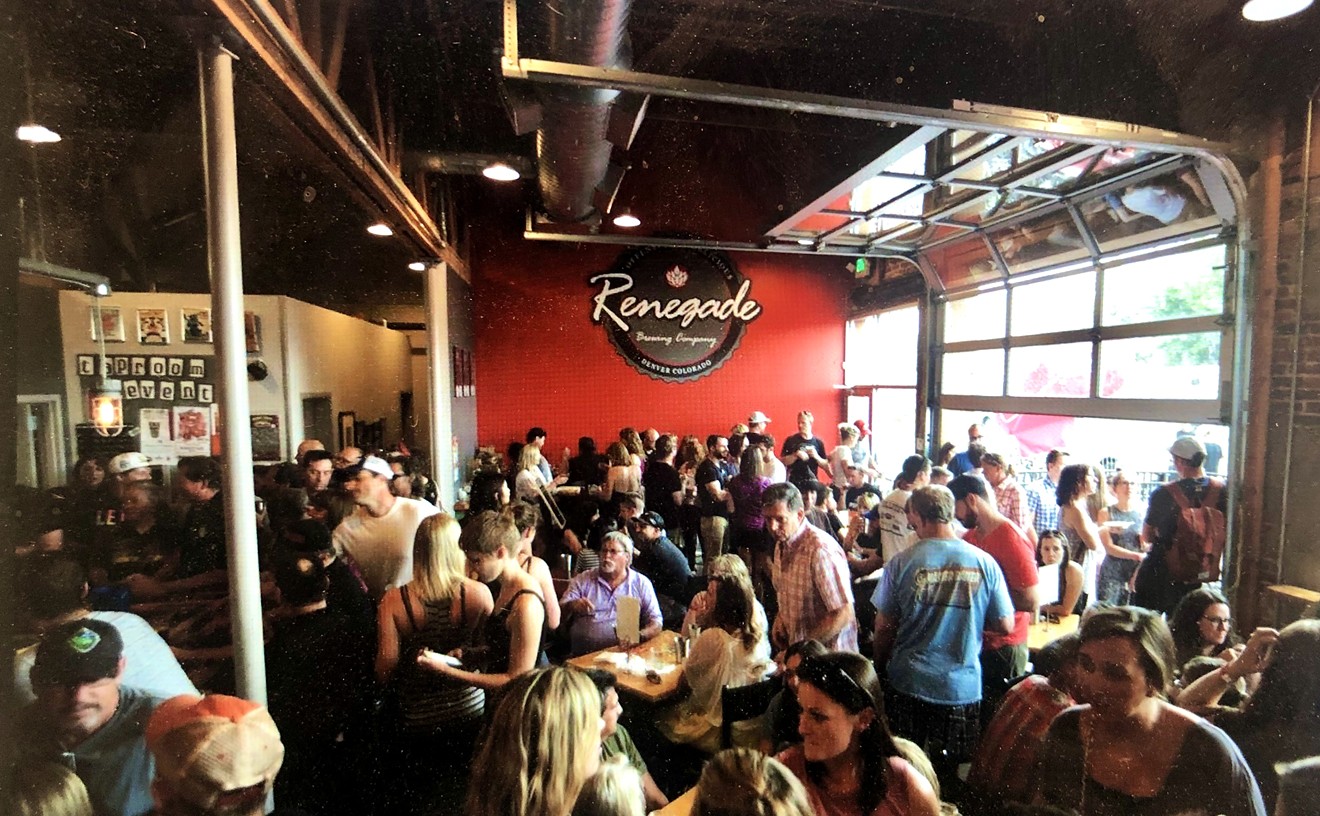You know the drill at the majority of Thai restaurants in Denver: You pick your entree and the server asks how spicy you want it. In many cases, you can even call out a number from a scale printed on the menu. And at the top of that scale are the scary words "Thai hot" or "Thai spicy."
"I'd better not," you think, assuming that the people of Thailand have somehow built up a tolerance to the blistering sear of chiles over the centuries. So you opt for medium, which is probably what the kitchen would have sent out had the whole conversation never occurred. Or if you flirt with the high end of the scale, the typical response is, "Are you sure?"
It's a tricky cultural dance: Thai restaurant owners assume Westerners can't handle even the barest tickle of warmth (an assumption reinforced by dishes occasionally returned to the kitchen), while Western diners think that "authentic" Thai cuisine is supposed to hurt, so we either overcompensate and regret it or else we go low out of sheer terror and end up disappointed by our selection's lack of zing.
So what's the solution? Knowing your restaurant's tendencies can help; pick a Thai eatery and dine there several times to get a handle on the heat level. And when the server asks the inevitable question, respond with either "I'd like it the way it's traditionally served" or "however the chef recommends." That way, you'll end up with food cooked the way the restaurant intends. If your heat tolerance is low, ask for recommendations of dishes that don't generally include chiles.
At Taste of Thailand on South Broadway, owners Noy and Rick Farrell resisted offering a heat scale for many years. When I asked them how food in restaurants in Thailand is generally prepared, Rick passed on some answers from his wife (who's currently spending time in Europe). Noy explained that the heat level is generally determined by the dish itself, so diners and cooks both know based on tradition. But restaurants don't take issue with guests who like things a little spicier; a common practice is to just request the number of chiles the chef should add (which is quite possibly how the common heat scale was born).
Rick explains that his brother-in-law, who has cooked at Taste of Thailand since it opened in 1994, prefers not to overdo it with chiles because "it masks the little flavors." One exception is a dish called pad ped, which Noy calls "Rural Fire" on the menu. It's a rustic country dish that is always fiery and often includes game meats when prepared in the jungle regions of Thailand. The Taste of Thailand kitchen adds vegetables like onion and celery that stand up well against the blaze; Noy notes that spicier dishes served in Thailand often come with a side of vegetables doused in fish sauce as a kind of fire extinguisher.
Here's what you can expect at three other Denver Thai restaurants if you do decide to order "Thai hot," with chicken panang curry used as the baseline in all three cases.
U.S. Thai Cafe
5228 West 25th Avenue, Edgewater
303-233-3345
U.S. Thai has a reputation for bringing the heat, so even chile-heads should be satisfied with medium. I wanted to test the upper limits of the kitchen, so I ordered Thai hot, which prompted a lengthy conversation with the server. She suggests that all guests (not just intrepid researchers like me) order no higher than medium and to just ask for a side of the dried chile flakes to adjust the burn. After assuring her that my quest was in the name of science, she put in my order, which earned an "Ooh!" from the open kitchen.
The panang curry came out brick red and angry-looking, with chile seeds interspersed among the bell pepper, basil leaves and other veggies. The curry itself was beautiful and thick with pulverized roots and herbs, giving it a smoky, earthy flavor with no single element standing out above the rest — except for those chiles. The first couple of bites were eyebrow-raising, but that was just the beginning. Soon I broke a sweat, my eyes watered and my sinuses filled — as if my body was attempting to fight off an attack. Thai hot definitely makes for one of the spiciest dishes in town, and honestly, you should heed the server's advice. U.S Thai's panang is neither thinned down with coconut milk nor dumbed down for Thai novices; it's a wonderful example of Thai cooking that needs no additional heat.
Thailicious
2045 Sheridan Boulevard, Edgewater
303-237-1235
Thailicious is in many ways the opposite of U.S. Thai. The restaurant itself is cute and the menu is designed to highlight bright and fun flavors. Cilantro, lime and coconut play a larger role than anything tongue-punishing, so even an order of Thai-hot panang curry doesn't tread far into dangerous territory. The kitchen uses fresh, minced Thai bird chiles to up the heat factor, so a confetti of red decorates the broth and adds distinct flavor without overwhelming the curry, which exhibits fish sauce and chicken as its primary components. This is a dish for those looking for smooth, integrated flavors for a light lunch or dinner.
Thai Monkey Club
102 South Broadway
303-248-3334
Thai Monkey Club lands in the middle ground between U.S. Thai and Thailicious. Bold flavors tend to predominate, even before a request for Thai hot is put in. This version of panang is heavy on galangal, giving the distinct medicinal note of the root that's otherwise similar to ginger. A fine powder of dried red chile is the spice of choice here, so the first bites aren't face-melting. But as the powder hydrates in the sauce, the heat is released, so the last bites definitely have more kick than the first. And if you take home leftovers, be prepared for a considerably louder fire alarm the second day.
Should you order Thai hot? If you want to experience a full range of flavors and taste dishes as they evolved in their home country, you can skip that end of the scale. But sometimes a good tongue-blasting is exactly what you're craving — and these Thai restaurants know how to get it right while providing a quality meal that doesn't approach stunt-food territory.
[
{
"name": "Air - MediumRectangle - Inline Content - Mobile Display Size",
"component": "12017618",
"insertPoint": "2",
"requiredCountToDisplay": "2"
},{
"name": "Editor Picks",
"component": "17242653",
"insertPoint": "4",
"requiredCountToDisplay": "1"
},{
"name": "Inline Links",
"component": "18838239",
"insertPoint": "8th",
"startingPoint": 8,
"requiredCountToDisplay": "7",
"maxInsertions": 25
},{
"name": "Air - MediumRectangle - Combo - Inline Content",
"component": "17261320",
"insertPoint": "8th",
"startingPoint": 8,
"requiredCountToDisplay": "7",
"maxInsertions": 25
},{
"name": "Inline Links",
"component": "18838239",
"insertPoint": "8th",
"startingPoint": 12,
"requiredCountToDisplay": "11",
"maxInsertions": 25
},{
"name": "Air - Leaderboard Tower - Combo - Inline Content",
"component": "17261321",
"insertPoint": "8th",
"startingPoint": 12,
"requiredCountToDisplay": "11",
"maxInsertions": 25
}
]











